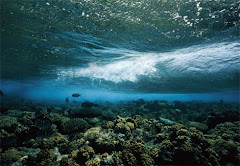
The world's oceans are becoming more acidic, and it is even worse than we first thought. New studies show that the prediction models relating to ocean acidification are off, and not just by a little bit but by a lot. Since the year 2000, scientists have been measuring the acidity of the waters around Tatoosh Island off the coast of Washington state. The results have been generating some concern. They show that the acidity increased ten times faster than the prediction models suggested. This result was the prediction for a time period of 100 years, not 8. You can read more about the study and the effects here.































